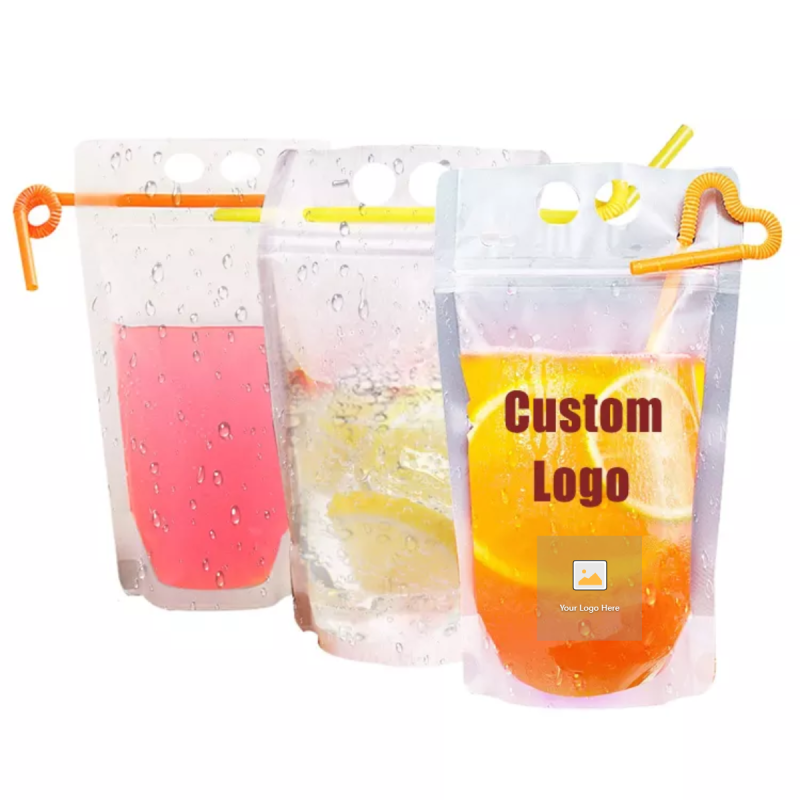The Convenient Innovation of Juice Pouch Bags
What are Juice Pouch Bags?
Juice pouch bags are flexible stand-up pouches with built-in straws used for packaging fruit juices, flavored drinks, purees, and other non-carbonated beverages. They are also referred to as drink boxes or juice boxes.
Juice pouches revolutionized on-the-go beverage packaging when first introduced in the 1980s as an alternative to heavier glass bottles and tins. They continue to dominate kids’ lunchboxes and school cafeterias thanks to their light weight and ease of use.
Benefits of Juice Pouches
Juice pouches offer unique advantages that make them a preferred beverage packaging format:
Portability
Their compact, grab-and-go form makes juice pouches highly portable and convenient for active lifestyles and busy schedules. They squash down easily when empty.
Lightweight and Compact
Juice pouches weigh much less and take up less space than rigid containers. This reduces shipping costs and refrigerated storage space.
Easy to Use
The built-in straw enables easy, no-spill drinking straight from the pouch. No need to unpack other drinking devices.
Resealable
Some juice pouches have screw caps allowing resealing and storage after initial use. This prevents spills and extends product life.
Low Wastage
The pouch design virtually eliminates product residue or contamination. Very little gets wasted compared to open containers.
Materials Used for Juice Pouches
The main materials that comprise juice pouches are:
Laminates
Combinations of plastic films, aluminum foils, and papers to provide shelf life, strength, puncture resistance and barrier properties.
Plastics
Polyethylene provides flexibility. PET lends support. Both are heat sealable for pouch formation.
Aluminum Foil
Provides excellent barrier against light, oxygen and flavors. A thin layer is incorporated in laminates.
Manufacturing Process of Juice Pouches
Juice pouches are produced on form-fill-seal machines:
Forming
Rolls of packaging laminate are thermoformed into the pouch shape with one open end.
Filling
The juice or beverage is sterile-filled into the formed pouches at high speeds.
Sealing
The open end is sealed shut after filling to complete the airtight, shelf-stable package. The straw is inserted during sealing.
Innovations in Juice Pouch Packaging
Recent innovations include:
- Pouches with recloseable spouts for easier resealing
- Microwavable juice pouches for hot beverages
- Pouches with insulation features to maintain cold temperatures
- Functional ingredients like vitamins, probiotics added to juices
- Tamper-evident pull-off caps and seals
- Press-to-drink pouches to prevent spills while preserving straw hygiene
Environmental Impact of Juice Pouches
- Juice pouches have a lower carbon footprint compared to heavier glass bottles.
- However, most pouches contain plastic and aluminum laminates making them difficult to recycle. Special facilities are needed.
- New eco-friendly alternatives like pouches made of bioplastics or paper are being explored.
- There is also onus on consumers to responsibly dispose of used pouches.
Conclusion
With their lightweight portability and easy-to-use functionality, juice pouches have become a favored packaging for on-the-go beverage consumption. Continued innovation is enhancing convenience, safety and sustainability of juice pouches.
FAQs
How long is the typical shelf life of juice in pouches?
The typical shelf life in aseptic foil pouches is 9-12 months for juices without preservatives. Refrigeration extends shelf life after opening.
How are juice pouches recycled?
Juice pouches contain plastic-aluminum laminates requiring specialized recycling. Some companies offer mail-back pouch recycling programs.
Are juice pouches safe for hot fill drinks?
Pouches designed for hot filling have specialized laminates resistant to heating. Hot juices also require aseptic processing for safety.
Can I make my own juice pouches?
Making juice pouches requires industrial pouch forming and filling machinery unavailable for home use. Pre-made pouches can be bought and hand filled but won’t be aseptic.
Are juice pouches bad for babies’ teeth?
The acidic nature of juice can damage baby teeth when sucking long-term on pouches. Babies should drink water after juices and only have a limited amount per day.
What are pencil straws made of?
The thin straws for juice pouches are made of food-grade plastic polymers like polypropylene.






Leave A Comment